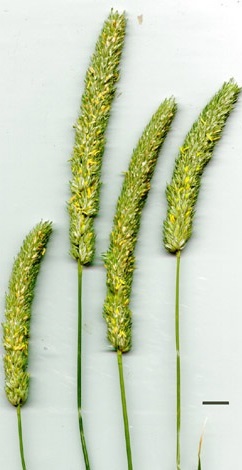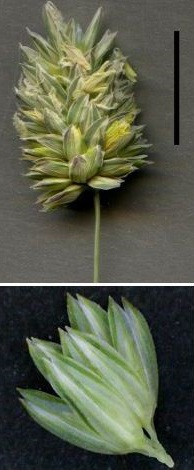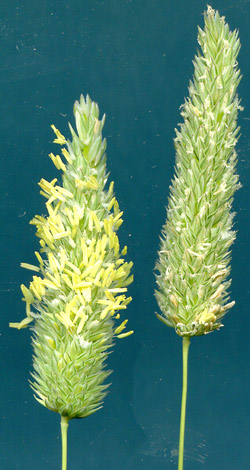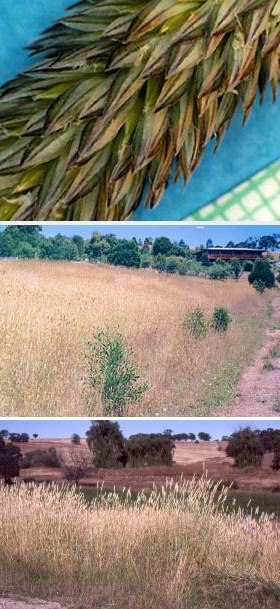Phalaris - introduced (*Phalaris aquatica)




Column 1: Typical elongated flower clusters.
Column 2.1: A flower cluster in drought conditions. 2.2: Part of a flower cluster with overlapping spikelets.
Column 3.1: Flower clusters with anthers.
Column 4.1: Overlapping spikelets. 4.2: Dense growth of Phalaris. Darraweit Guim cemetery. 4.3: Roadside Phalaris. Yapeen.
Native to the Mediterranean region. Perennial. C3.
Family. Poaceae (Grass family).
Ocurrence: very common and can form dense tussocks that exclude other vegetation. A common roadside weed.
Other names: Toowoomba Canary-grass.
Identification:
- it is a perrenial and forms dense tussocks
- the flowers are in dense more or less cylindrical clusters
- the glumes are longer than the lemmas and are conspicuously flattened to form wings
- the wings are not toothed
- the 1st and 2nd lemmas are sterile, and the upper fertile
- the leaves are flat
- the ligule is membranous 4-10mm long, becoming torn.
A distinctive tall grass with cylindrical flower clusters. Very common along roadsides. It may be in pure stands.
It is a tall grass to 1.5m, but may be less in hard conditions. The length of the flower cluster ranges from about a centimetre to about 10cm. The flowers are very shortly stalked, and arranged around the stem, so that the spray appears almost cylindrical. The glumes are winged; the wings are not toothed or indented. The spikelets have two sterile lemmas, the lower one is very small and the upper is hairy. The fertile lemma is larger and 3-4mm long.
It is an environmental weed.
phalos : shining, referring possibly to the shiny lemmas; aquatica: living in water.
Lesser Canary-grass (Phalaris minor) also grows locally. As its name suggests, it is a smaller version of Phalaris. Its flowers are similar, except that the glumes are conspicuously toothed at the top margin.
Paradoxical Canary-grass (Phalaris paradoxa) Paradoxical Canary-grass differs from Phalaris in that it is an annual, the glumes are prominently toothed near the apex, the flower-stalks are hairy, and the fertile spikelet is surrounded by infertile spikelets. It is lower growing (to about 0.7 metres) and the flower clusters are often oval in shape. It is also less common.